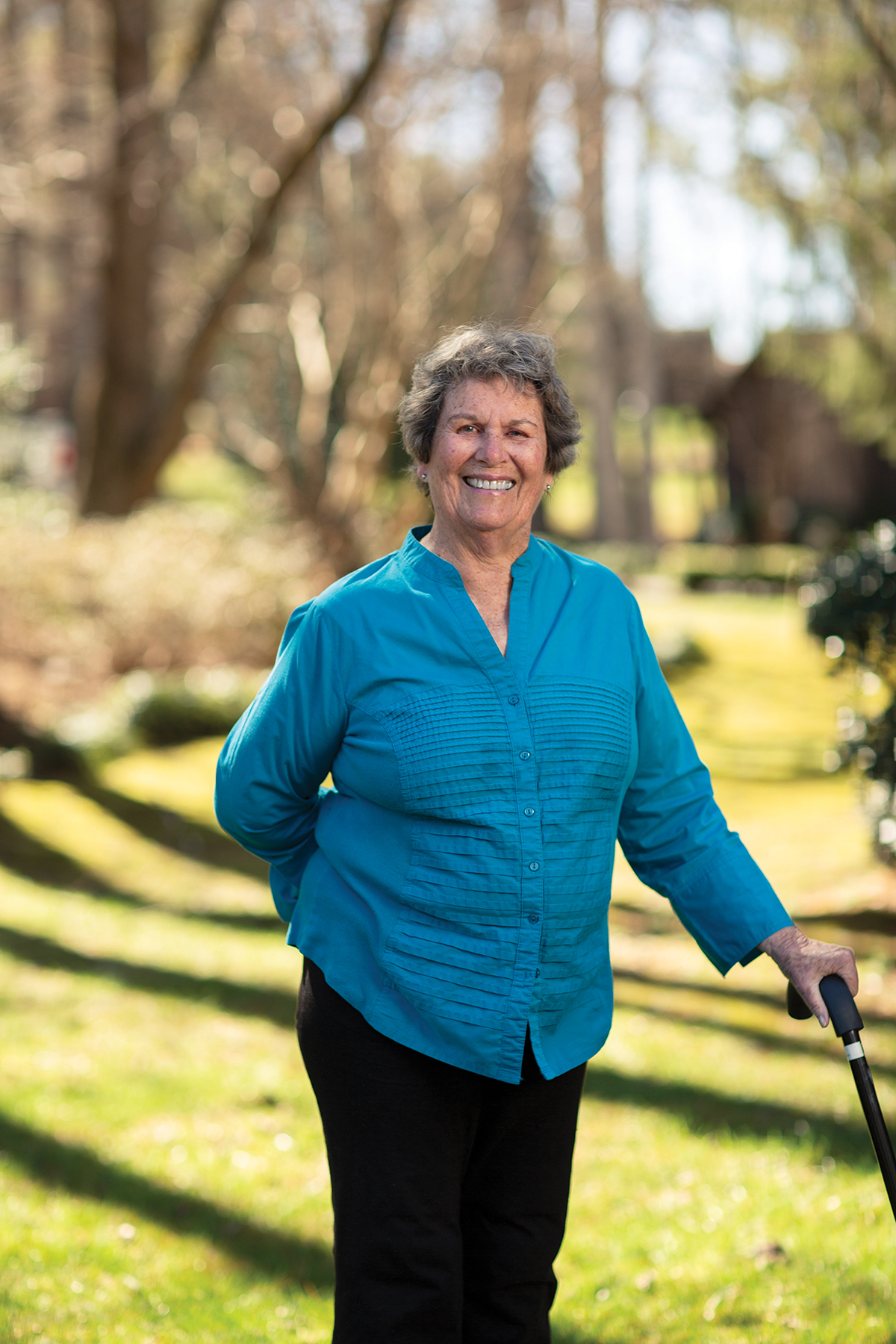Local miniaturist’s tiny chairs are a favorite among
aficionados and aristocrats

Maven of Miniatures
Nicole Marble found a thriving market for her meticulous miniatures when she began focusing on making chairs.
Photo by Colby Rabon
Nicole Walton Marble was in her thirties when she discovered her life’s calling. By then, she’d studied history at Pasadena City College, volunteered during the Nixon/Kennedy campaign, worked as a zookeeper, and co-owned a stained-glass studio. But it was dollhouse-sized furniture that captured her heart.

The artist’s chairs from different eras and areas (French vintage, Danish modern, Windsors, upholstered Queen Annes and dozens of other vernacular styles) are researched, engineered, and styled with their signature materials and patinas.
Photo by Colby Rabon
“I’d been whittling since childhood,” she says. “My best friend knew I liked carving little animals, and she urged me to visit the store where she’d bought furniture for her daughter’s dollhouse. She said I’d love the tiny beds and tables there.”
Marble found the miniatures intriguing, but it was the big numbers on the price tags that seduced her: “I realized I could make good money doing this.”

Photo by Colby Rabon
Back home, she focused on what the store lacked: musical instruments. Research began. She visited pawn shops to see and hold violins. Since industry miniatures are 1/12 the size of the real thing (an inch to a foot), she measured every aspect of a violin, then drew to scale all sides and angles of the instrument on graph paper.
“I must have taken months to get the wood and tools, strings — everything I needed to make it look as much like a tiny violin as I could.”
When she finished, she took her violin to the shop and the owner asked, “How much?”
“I said, ‘$20.’ And she paid me. That seemed like a lot at the time,” Marble says. “I got more wood and tools, did more research, and made a double bass. Then a cello. Then a piano. She bought everything I made.”

Photo by Colby Rabon
The shop owner said Marble should make a chair. Not just any chair, but a chair with some historic flair and style: a classic Windsor chair with a carved seat and spindled back.
“Windsor chairs require bending wood and turning wood,” Marble explains. “So I learned how to bend wood by soaking it in a mixture of ammonia and water.”
Her Windsor chair was a hit. More followed. She expanded her repertoire, creating wing chairs, upholstered Queen Anne chairs, swivel chairs, Danish modern chairs, as well as matching tables. Each is carefully handcrafted — a tiny work of fine art.

Marble has been commissioned to make tiny reproductions of storied furniture, including the antique cradles of royal babies. She is believed to be the only one in her genre who is able to make miniature caned-bottom chairs.
Photo by Colby Rabon
When Marble began displaying her work at shows for dealers and collectors, her reputation grew, and along with it her prices. “I go with my miniatures and hundreds of business cards,” she says. Before the pandemic, she was a regular exhibitor at the Tom Bishop Chicago International Miniature Show, billed as the largest gathering of miniaturists in the world.

Photo by Colby Rabon
The show resumes this year, and Marble will be there on April 30 and May 1. “Dealers and collectors have come from Russia, Ukraine, several South African nations, from Australia, Japan, Germany and other countries. I try to position my [display] table in the midst of as many foreign people as I can to make contacts all over the world.”
Such networking has resulted in special orders from individuals and museums. Could she make an 18th-century child’s high chair? one client wondered. How about a bathtub from the Italian Renaissance era?

Photo by Colby Rabon
Another customer commissioned a miniature of a 19th-century cradle that once held a Hawaiian prince. Marble did the research and made the piece.
Today, her prices are in the thousands. And dealer shows have led to international friendships and fascinating customers.

Tools of the tiny trade.
Photo by Colby Rabon
“My best customer is a member of the royal family in Qatar,” Marble reveals. “He’s interested in fancy French furniture.”
The first time he visited her table at the Chicago show, “he had this huge round wad of bills making his pants pocket bulge,” she remembers with a laugh. “Royals don’t use credit cards or write checks.”

Photo by Colby Rabon
Marble works out of her Hendersonville home, having turned one bedroom into her workshop. After nearly 50 years, she still loves the miniature maker’s life.
“The process is utterly fascinating,” she says. “There’s a satisfying engineering element to it. I was a history major in school, and part of this work is researching how they made things back then. I love learning how craftsmen did stuff in the really old days.”

Photo by Colby Rabon
Once chiefly known for her Windsors, today Marble is the go-to for French Bergère armchairs. Most recently, she’s been making caned chairs. “There’s surprisingly little duplication [in subject matter] among miniature artisans,” she says. “Some specialize in tools or food or little dolls. I think I’m the only person doing caning.”
And even half a century on, there’s always something new to learn: “It took me a long time to find the right material — Japanese silk — that wouldn’t fray or break during the caning process.”
Nicole Walton Marble Unlimited, Hendersonville. For more information, see the artist’s Facebook page.



